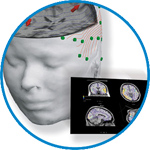- Home
- About ANT
-
Products

asa
asa is a highly flexible EEG/ERP and MEG analysis package with a variety of source reconstruction, signal analysis and MRI processing features.
.jpg)
eego mylab
The new frontier in multimodal brain research. With up to 16 kHz sampling rate, 256 EEG channels and unique software features, eego mylab gives you an unprecedented in-depth understanding of the human brain.

eego sports
eego sports offers complete freedom to collect high-density EEG data, bipolar EMG signals, and a variety of physiological sensor data, wherever and whenever required, with publish quality data in less than 15 minutes!

waveguard net
The waveguard net sets a new standard for research applications requiring high-density EEG data acquisition with quick preparation time, high flexibility, and subject comfort.

visor2
Our new and upgraded visor2 solutions integrate all the latest technologies for navigated rTMS, dual-coil navigation support, EEG-TMS recordings and pre-surgical evaluation for the highest quality in research and clinical procedures.

powerMAG ANT
The PowerMAG ANT 100 rTMS stimulator is designed for the specific needs of high-end TMS applications. Powerful high-frequency TMS as well as high precise single pulse and repetitive pulse protocols are combined in one single device.

xensor
xensor offers the solution for digitization of 3D electrode positions. xensor takes care of the whole procedure; it records, visualizes and stores positions acquired with a dedicated digitizer.

waveguard original
waveguard original is the cap solution for EEG measurements compatible with fMRI, MEG and TMS system. Use of active shielding guarantees performance in even the most demanding environments.

waveguard connect
waveguard connect EEG caps are a perfect match for hospitals and institutes aiming at reliable EEG, maximum uptime and great patient comfort! For optimal signal quality, the electrodes are made of pure, solid tin.

waveguard touch
waveguard touch is a dry electrode EEG cap. The unique Ag/AgCl coated soft polymer electrodes provide stable, research-grade EEG signals while maintaining subject comfort. The combination of these innovative dry electrodes and the industry-leading waveguard cap makes waveguard touch the best solution for dry EEG.

smartmove
smartmove allows planning of a complete TMS session ahead by defining stimulation sites based on anatomical MRI information and functional information like fMRI, PET or EEG/MEG.
Stay - References
- Support
- Events
- News
- Contact Us
You are here
Detection of 'EEG bursts' in the early preterm EEG: visual vs. automated detection.
Detection of 'EEG bursts' in the early preterm EEG: visual vs. automated detection.
Objective: To describe the characteristics of activity bursts in the early preterm EEG, to assess inter-rater agreement of burst detection by visual inspection, and to determine the performance of an automated burst detector that uses non-linear energy operator (NLEO).
Methods: EEG recordings from extremely preterm (n=12) and very preterm (n=6) infants were analysed. Three neurophysiologists independently marked bursts in the EEG, the characteristics of bursts were analyzed and inter-rater agreement determined. Unanimous detections were used as the gold standard in estimating the performance of an automated burst detector. In addition, some details of this automated detector were revised in an attempt to improve performance.
Results: Overall, inter-rater agreement was 86% for extremely preterm infants and 81% for very preterm infants. In visual markings, bursts had variable lengths (approximately 1-10s) and increased amplitudes (and power) throughout the frequency spectrum. Accuracy of the original detection algorithm was 87% and 79% and accuracy of the revised algorithm 93% and 87% for extremely preterm and very preterm babies, respectively.
Conclusion: Visual detection of bursts from the early preterm EEG is comparable albeit not identical between raters. The original automated detector underestimates the amount of burst occurrence, but can be readily improved to yield results comparable to visual detection. Further clinical studies are warranted to assess the optimal descriptors of burst detection for monitoring and prognostication.
Significance: Validation of a burst detector offers an evidence-based platform for further development of brain monitors in very preterm babies.
Copyright 2010 International Federation of Clinical Neurophysiology. Published by Elsevier Ireland Ltd. All rights reserved.

 Read more
Read more.jpg)




